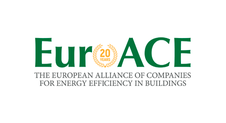Search eceee proceedings
Energy sufficiency in (strongly intertwined) building and city design – examples for temperate and Mediterranean climates
Panel: 8. Buildings: technologies and systems beyond energy efficiency
This is a peer-reviewed paper.
Authors:
Lorenzo Pagliano, Politecnico di Milano, Dipartimento di Energia, Italy
Silvia Erba, Politecnico di Milano, Dipartimento di Energia, Italy
Abstract
Within the future climate, which will bring longer and longer periods of high temperature in summer, exacerbating the heat island effect in cities, efficiency and sufficiency actions in buildings are strongly connected with enabling/hindering conditions in cities. E.g. the use of night ventilation in summer to achieve comfort without using air-conditioning is possible if:
– noise is reduced by car-limitation and/or speed limitation policies
– night air temperature is kept low via increased presence of vegetation and “cool” finishing of urban surfaces
– the installation and correct use of external solar protections on buildings (and streets) is explicitly and correctly included in local building codes and its effective application actively supported and controlled at city level.
The reduction of the per capita building surface might be encouraged by the availability of attractive shared spaces within buildings and outdoor e.g. children having safe, autonomous access to common indoor/outdoor spaces for playing, the creation of cool open spaces for pedestrians at district level by shading streets and squares with tenso-structures (as traditional in parts of Spain and Portugal) and trees.The use of climate and health friendly bicycle transport requires well designed spaces for bikes not only in the streets but also in each new and existing building.
We discuss how new «smart districts» and city re-design should and might include those and other efficiency and sufficiency-enabling physical features. We present a comprehensive matrix of interactions between building and district design for use by building designers and city planners with a focus on the emerging issue of summer comfort under a warming climate. A preliminary relevant question is if current policies are able to promote opportunities as the ones outlined above or there is a need to adapt those policies and how.
Downloads
Download this paper as pdf: 8-360-19_Pagliano.pdf
Download this presentation as pdf: 8-360-19_Pagliano_Presentation.pdf
Panels of
1. The dynamics of limiting (energy) consumption
2. What's next in energy policy?
4. Monitoring and evaluation for greater impact
5. Smart and sustainable communities
7. Make buildings policies great again
8. Buildings: technologies and systems beyond energy efficiency
9. Improving energy efficiency in ICT, appliances and products

























